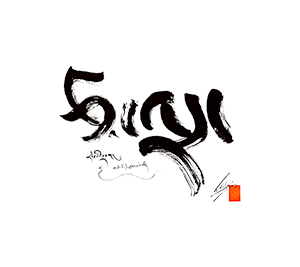|
|
| Line 4: |
Line 4: |
| |AuthorPage=Need, D. | | |AuthorPage=Need, D. |
| |PubDate=1993 | | |PubDate=1993 |
| |ArticleSummary=In ''The Buddha Within'', Dr. S. K. Hookham reworks her dissertation (Ox- | | |ArticleSummary=In ''The Buddha Within'', Dr. S. K. Hookham reworks her dissertation (Oxford, 1986) outlining the Shentong<ref>Throughout this review, I follow Hookham's phoneticization for the terms Shentong and rangtong, as well as for the names of figures in the Shentong tradition.</ref> tradition in Tibet and its view of ultimate reality. "Shentong" (''gzhan stong'', other-empty) is a term used in Tibet to refer to a view of ultimate reality as a wisdom consciousness empty or free of the illusory phenomena of conditioned existence. Such a view owes heavily to the description of ultimate reality in the Tathāgatagarbha Sūtras and in the tantras. One of the earliest proponents of this view was the Jo-nang-pa scholar, Dolpopa Sherab Gyaltsen (''dol-po-pa shes-rab rgyal-mtshan'', 1292-1361), whose massive study titled ''The Mountain Dharma: An Ocean of Definitive Meaning'' (''ri chos nges don rgya mtsho'') outlined this doctrine, extensively citing from sūtra and tantra in support of his position. The Shentong position advanced by Dolpopa and later by such figures as the seventh Karmapa (1454-1506), the Sakya scholar, Sakya Chogden (''gser-mdog paṇ-chen Śākya mchog-ldan'', 1428-1507), and most recently by one of the founders of the Rimay (''ris med'', nonsectarian) movement of the nineteenth and twentieth centuries,<ref> For an outline of the history of the Rimay movement, see Gene Smith, ''Introduction to the Index of Kong sprul's Encyclopedia of Indo-Tibetan Culture'', ed. Lokesh Chandra (New Delhi, 1970.</ref> Jamgon Kontrol Lodro Thayay ('''jam-mgon kong-sprul blo-gros mtha'-yas'', 1813-1899), was the object of sustained critique by scholars of other schools-notably those of the Geluk-pa tradition-who advanced what is called a "rangtong" (''rang stong'', self-empty) view of ultimate reality. These scholars held the ultimate truth to be an existent object of knowledge cognized by a wisdom consciousness. Such an object of a wisdom consciousness is held to be a nonaffirming negative—the absence of the inherent existence of any given phenomena, most importantly the self. Shentong advocates argue that this view of ultimate reality fails to account adequately for the qualities associated with a Buddha's wisdom, although it does account for the nature of illusory phenomena. (Need, "Review of ''The Buddha Within''," 585)<br><br> |
| ford, 1986) outlining the Shentong<ref>Throughout this review, I follow Hookham's phoneticization for the terms Shentong and rangtong, as well as for the names of figures in the Shentong tradition.</ref> tradition in Tibet and its view of ultimate reality. "Shentong" (''gzhan stong'', other-empty) is a term used in Tibet to refer to a view of ultimate reality as a wisdom consciousness empty or free of the illusory phenomena of conditioned existence. Such a view owes heavily to the description of ultimate reality in the Tathāgatagarbha Sūtras and in the tantras. One of the earliest proponents of this view was the Jo-nang-pa scholar, Dolpopa Sherab Gyaltsen (''dol-po-pa shes-rab rgyal-mtshan'', 1292-1361), whose massive study titled ''The Mountain Dharma: An Ocean of Definitive Meaning'' (''ri chos nges don rgya mtsho'') outlined this doctrine, extensively citing from sūtra and tantra in support of his position. The Shentong position advanced by Dolpopa and later by such figures as the seventh Karmapa (1454-1506), the Sakya scholar, Sakya Chogden (''gser-mdog paṇ-chen Śākya mchog-ldan'', 1428-1507), and most recently by one of the founders of the Rimay (''ris med'', nonsectarian) movement of the nineteenth and twentieth centuries,<ref> For an outline of the history of the Rimay movement, see Gene Smith, ''Introduction to the Index of Kong sprul's Encyclopedia of Indo-Tibetan Culture'', ed. Lokesh Chandra (New Delhi, 1970.</ref> Jamgon Kontrol Lodro Thayay ('''jam-mgon kong-sprul blo-gros mtha'-yas'', 1813-1899), was the object of sustained critique by scholars of other schools-notably those of the Geluk-pa tradition-who advanced what is called a "rangtong" (''rang stong'', self-empty) view of ultimate reality. These scholars held the ultimate truth to be an existent object of knowledge cognized by a wisdom consciousness. Such an object of a wisdom consciousness is held to be a nonaffirming negative—the absence of the inherent existence of any given phenomena, most importantly the self. Shentong advocates argue that this view of ultimate reality fails to account adequately for the qualities associated with a Buddha's wisdom, although it does account for the nature of illusory phenomena. (Need, "Review of ''The Buddha Within''," 585)<br><br>
| |
| [https://www-jstor-org.du.idm.oclc.org/stable/1399586?Search=yes&resultItemClick=true&searchText=pt%3A&searchText=%22Philosophy+East+and+West%22&searchUri=%2Faction%2FdoBasicSearch%3FsearchType%3DfacetSearch%26amp%3Bsd%3D1993%26amp%3Bed%3D1993%26amp%3BQuery%3Dpt%253A%2522Philosophy%2BEast%2Band%2BWest%2522%2B%26amp%3Bacc%3Don%26amp%3Bwc%3Don%26amp%3Bfc%3Doff%26amp%3Bgroup%3Dtest%26amp%3Bpagemark%3DcGFnZU1hcms9Mw%253D%253D&ab_segments=0%2Fbasic_search%2Fcontrol&seq=1#metadata_info_tab_contents Read more here . . .] | | [https://www-jstor-org.du.idm.oclc.org/stable/1399586?Search=yes&resultItemClick=true&searchText=pt%3A&searchText=%22Philosophy+East+and+West%22&searchUri=%2Faction%2FdoBasicSearch%3FsearchType%3DfacetSearch%26amp%3Bsd%3D1993%26amp%3Bed%3D1993%26amp%3BQuery%3Dpt%253A%2522Philosophy%2BEast%2Band%2BWest%2522%2B%26amp%3Bacc%3Don%26amp%3Bwc%3Don%26amp%3Bfc%3Doff%26amp%3Bgroup%3Dtest%26amp%3Bpagemark%3DcGFnZU1hcms9Mw%253D%253D&ab_segments=0%2Fbasic_search%2Fcontrol&seq=1#metadata_info_tab_contents Read more here . . .] |
| |DisableDropcap=Yes | | |DisableDropcap=Yes |
| }} | | }} |
